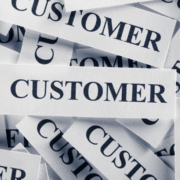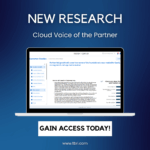In Fast-evolving AI Markets, Platform Alignment Determines Who Keeps the Customer
Platform strategy emerges as critical differentiator in agentic AI era
Every company claims to be a data company, every tech company wants to be an AI company, and every smart company has become a platform company. For companies in the technology ecosystem, including consultancies like McKinsey & Co. and EY, OEMs like Dell Technologies (Dell) and Hitachi, connectivity specialists like Nokia and Ericsson, and IT services generalists like Accenture and IBM, finding the right platform partner might be the most strategic decision they need to make before 2026.
The speed of technology change and challenges adapting to business model changes drive the importance of platforms. The rapid developments in AI, most recently with agentic solutions, illustrate how being a platform company enables vendors to maintain a solutioning role even as technology evolves, and new participants become critical in the eyes of customers. Agentic solutions have also created myriad ways for companies to sustain their business models, acting as a conduit between end customers and the changing vendor landscape.
Ecosystem partnerships evolve as agnosticism fades, fast followers rise and multiparty alliances drive wins
Partnering across the technology ecosystem will be different going forward in three specific ways that will make early-2020s alliances seem as wildly dated as the metaverse. First, agnosticism will enter its death throes. Companies, starting with consulting firms, can no longer simply let the customer decide which components of the tech stack will come from which companies. Having no preference no longer implies flexibility to work with anyone and everyone because every company now works with anyone and everyone. Having no preference now implies having no technology innovation or, critically, no commercial relationship to bring to bear on the client’s business and technology needs. Clients have grown accustomed to tech agnosticism and moved beyond it. They want to know which companies have special relationships that bring innovative ideas, the latest solutions and the best commercial terms. Agnosticism is not special at all.
Second, 2026 will be the year when fast followers start following in earnest. TBR has seen industry-leading consultancies, IT services companies, hyperscalers and software vendors align their go-to-market motions, sales and leadership teams, and even cross-training and knowledge management initiatives to build a pipeline and accelerate revenue for all parties. According to data and insights from TBR’s Ecosystem Research, the most profitable and fastest-growing companies have been leveraging their alliances in new and profoundly meaningful ways.
For example, in TBR’s September 2024 Adobe and Salesforce Ecosystem Report, we estimate that IBM, currently among the top four largest by revenue, will have the third-fastest Salesforce-related revenue growth from 2023 to 2028 as “the two will integrate IBM watsonx platform and IBM Granite series models with the Salesforce Einstein 1 Platform. IBM Consulting is creating industry-specific prompt templates and copilot actions for Salesforce applications.” TBR anticipates more companies across the technology ecosystem will emulate the leading companies’ alliance strategies in 2026. Success begets imitation.
Third, transparency wrought by AI adoption will compel companies across the technology ecosystem to partner differently. As agnosticism fades and strategies converged around the best practices, differentiation will come from companies’ abilities to engage in multiparty alliances. In March, we highlighted Informatica’s realization that although going to market with one partner led to a win rate of 47%, compared to only 17% when going alone, going to market with more than one partner led to an 83% win rate. A couple of months later, Salesforce acquired Informatica. Without question, Salesforce understands the lessons Informatica learned about the power of multiparty alliances.
Reflecting this understanding, Salesforce has quickly embraced a multiparty ethos, prioritizing third-party integrations within its broader AI platform strategy. Its Agentforce Partner Network already includes Amazon Web Services (AWS), IBM, Workday, Google Cloud, and dozens of SI and ISV partners building reusable agent actions and templates into a shared agent ecosystem rather than separate point products. At the same time, Salesforce has expanded its alliance with Google so that customers can build agents using Gemini models while running core Salesforce workloads on Google Cloud infrastructure, although that capability is not yet generally available. On the services side, partners will lead deployment, governance, and change management. For instance, Cognizant recently announced an expanded partnership to help clients deploy, scale, and govern enterprise agents within the Salesforce ecosystem.
Like services vendors, Salesforce is moving away from an agnostic approach in favor of prioritization. Partner performance KPIs are closely scrutinized, and ecosystem participants showing the most momentum in scaling Agentforce adoption are receiving the bulk of co-marketing and co-innovation resources. From Salesforce’s perspective, it matters little whether a service vendor is an upstart; in fact, the company has seen several emerging partners rise quickly through the ecosystem ranks due to their adaptability and speed amid Salesforce’s growing focus on data and AI. Regardless of which vendors carry the Agentforce torch, Salesforce is making clear distinctions and taking note. By becoming more targeted, the company is better positioned to build structured multiparty alliance frameworks with selected vendors—an approach that will help Salesforce achieve the win rates cited by Informatica.
Next year, companies across the technology ecosystem will begin doing the same, slowly. We are under no illusions that multiparty alliances will become easier beginning Jan. 1, 2026. Commercial arrangements, sales incentives, and selecting the right mix in a multiparty alliance will still require investment, leadership and time. The fastest-growing companies in the technology ecosystem will commit to making their multiparty alliance strategy work, and we expect they will start to see those win rates above 80%.
In this changed environment, TBR will be more closely tracking the companies and firms most likely to be disruptive in the near term. Our current Ecosystem Research stream covers 15-plus global systems integrators’ and consultancies’ relationships with nine cloud companies and software vendors. Of those companies, we expect 2026 to be particularly exciting, perhaps even momentous or strategic, for Deloitte, Salesforce, Dell and IBM. In TBR’s quarterly coverage of those four companies, subscribers will learn about strategies, trends and performances that reflect how ecosystem participants expect the agentic AI age to shape the market.



